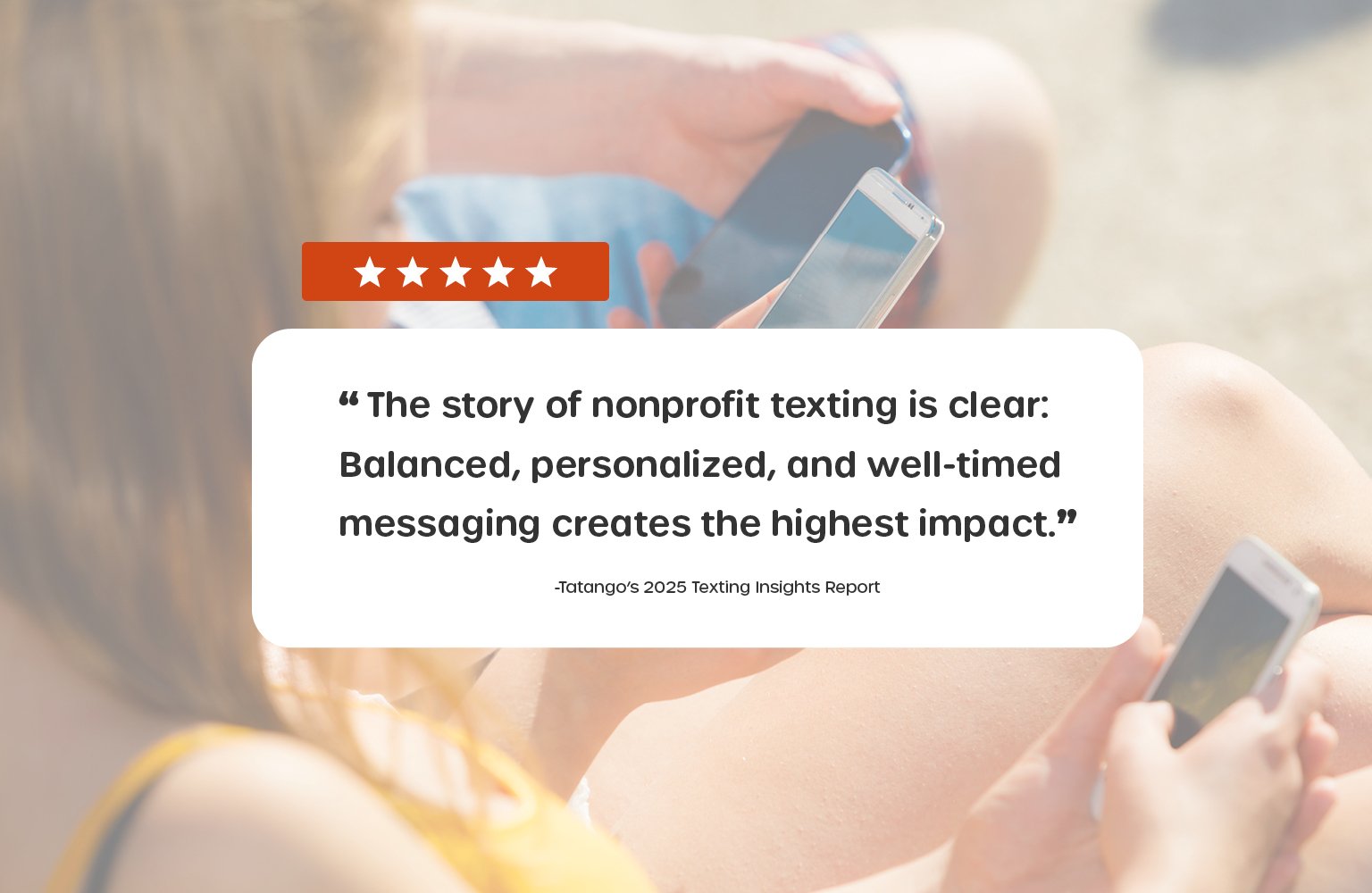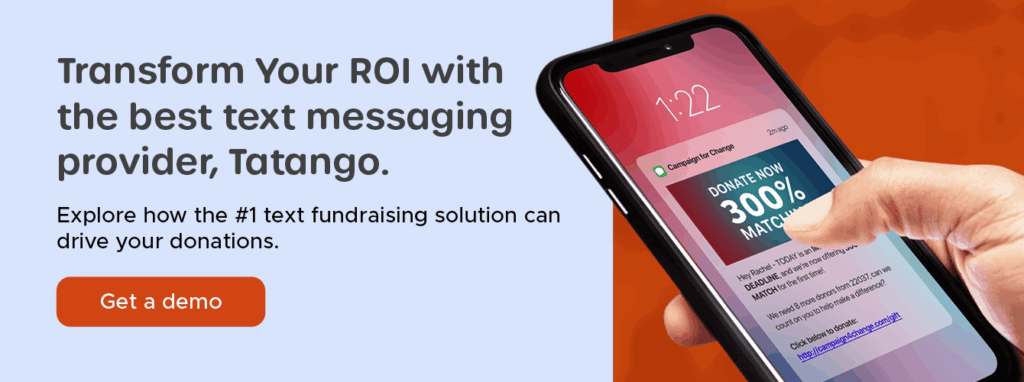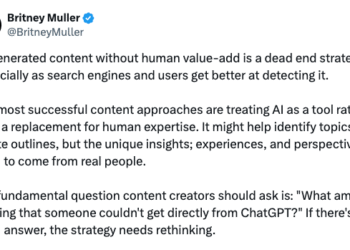
The nonprofit fundraising landscape changes constantly, especially when it comes to technology. That’s why the experts at Tatango and MissionWired recently teamed up to publish our 2025 Texting Insights Report.
This year, we analyzed over 138 million nonprofit text messages to discover what strategies drive the most donations. Read on to get our key takeaways, or download the free report for full access to the data.
High-Impact, Fast ROI Channels Are Needed
As we started collecting data about text fundraising, one thing became abundantly clear: To navigate federal funding cuts, economic uncertainty, and rising demand for services, nonprofits need fundraising channels that deliver results fast.
That’s where SMS comes in. With the channel’s 99% open rate and near-instant deliverability, text messaging naturally excels as a high-speed engagement strategy.
But what kind of results can you expect from fundraising texts? What does the return on investment (ROI) for nonprofits actually look like? In the 2025 Texting Insights Report, we found that:

- Fundraising texts raised $4.38 for every $1 spent.
- Text messages inspired donors to give $71 on average.
- Engagement texts (those not asking directly for a donation) raised $3.03 for every $1 spent.
- Engagement texts saw an average click-through rate of 3.28%.
Clearly, SMS can generate a significant ROI for your organization, whether you use it for fundraising appeals, relationship-building, or both.
Nonprofit SMS Performance Remains Strong
Organizations across the country recognize the need for fast, high-ROI channels like text messaging, and they’re tapping in. The nonprofits we surveyed sent an average of 36 bulk texts per year, a massive increase from last year’s average of just 9 text messages.
But nonprofits aren’t just sending SMS (plain text messages). Of the text messages they sent in 2024, about 61% were MMS (multimedia messages) and 39% were SMS. MMS messages had a 25% higher conversion rate, while SMS generated a 66% higher ROI, due to more clicks and fewer opt-outs.
Nonprofits saw the strongest performance when they combined SMS and MMS. By sending an MMS fundraising text followed by an SMS fundraising text within the next 3 days, conversion rates rose 53% and ROI increased 46%.
Relationship-Building Texts Drive Results
The data proves that you need more than just donation appeals to maintain a successful text fundraising strategy. Most nonprofits maintain a nearly even mix of fundraising and non-fundraising texts, before shifting primarily toward fundraising content in December.
For the majority of the year, organizations prioritize relationship-building text messages over direct asks. Engage your nonprofit’s donors over text before making an ask by:
- Sharing impact updates
- Inviting them to events
- Asking for their feedback
- Expressing your appreciation
- Sharing photos, videos, and blog posts
- Making other small, non-monetary asks
Ultimately, these kinds of text messages are highly valuable. Engagement texts had 3.28% click-through rates and a meaningful ROI of $3.03 per dollar spent.
Nonprofits Text the Most During Year-End Giving Season
Most months, nonprofits sent about 2-3 text messages to opted-in supporters. Thanks to Giving Tuesday and year-end campaigns, however, that number jumped to an average of 7 mass messages sent in December.
Urgency is key during the year-end giving season, so it makes sense that this is when text fundraising strategies really shine. Here’s a snapshot of what our Texting Insights Report found about texts sent during year-end campaigns:
- MMS messages sent during high-urgency campaigns like Giving Tuesday have higher conversion rates.
- Giving Tuesday is the strongest single day of the year for text fundraising.
- The day after Giving Tuesday actually generates a higher ROI and more conversions than Giving Tuesday itself.
- Like other channels, the last three days of December are strong performers for text fundraising.
- Compared to the rest of the year, texts sent in November and December deliver 89% higher ROI, larger average gifts, and fewer opt-outs.
Wondering how timing plays into text message success during other parts of the year? We’ve got that data, too! Download the report to find out the best time of day and day of the week for fundraising texts.
Program Maturity Matters
Finally, we found that text message performance is often related to the maturity of a nonprofit’s SMS strategies.
If your text fundraising program is new or you have a small contact list, you’ll likely see higher ROI, conversions, clicks, and opt-outs. As programs grow, they stabilize with more consistent retention and long-term ROI. To continue scaling effectively, organizations with larger lists must prioritize segmentation and automation.
Newer programs sent an average of 1-2 mass texts per month, balancing fundraising asks with engagement and cultivation messages to show donors the value of their opt-in. Larger programs increased their text frequency, with the largest campaigns sending up to 4-8 texts in a single week.
No matter where you are in your organization’s texting journey, one thing remains true: balance, personalization, and timing create the highest impact.

Next Steps for Nonprofits
With these insights at your fingertips, your organization has a clear next step. If you haven’t already, it’s time to tap into text fundraising. Smarter segmentation, personalization, and messaging integration will dominate the future of nonprofit texting, so build a strong foundation now.
Whether you’re starting from scratch or looking to scale your program, Tatango is here to help. Demo our best-in-class text fundraising software to start scaling your impact today.
 Mike Snusz, Director of Nonprofit Customer Experience
Mike Snusz, Director of Nonprofit Customer Experience
Mike Snusz brings nearly two decades of digital fundraising expertise to his role as Director of Nonprofit Customer Experience at Tatango, the industry’s leading text messaging platform for nonprofits. A recognized thought leader in SMS fundraising, Mike regularly speaks at national conferences and contributes insights to resources like the Texting Insights Report and other nonprofit publications.
Before joining Tatango, Mike spent 15 years at Blackbaud, where he led a team of digital consultants helping nonprofits optimize their online giving, email marketing, peer-to-peer fundraising, and monthly giving programs.
He began his nonprofit career in Buffalo, NY, managing the Ride For Roswell from 2003 to 2005—an experience that continues to shape his commitment to helping mission-driven organizations thrive in a digital world.




















